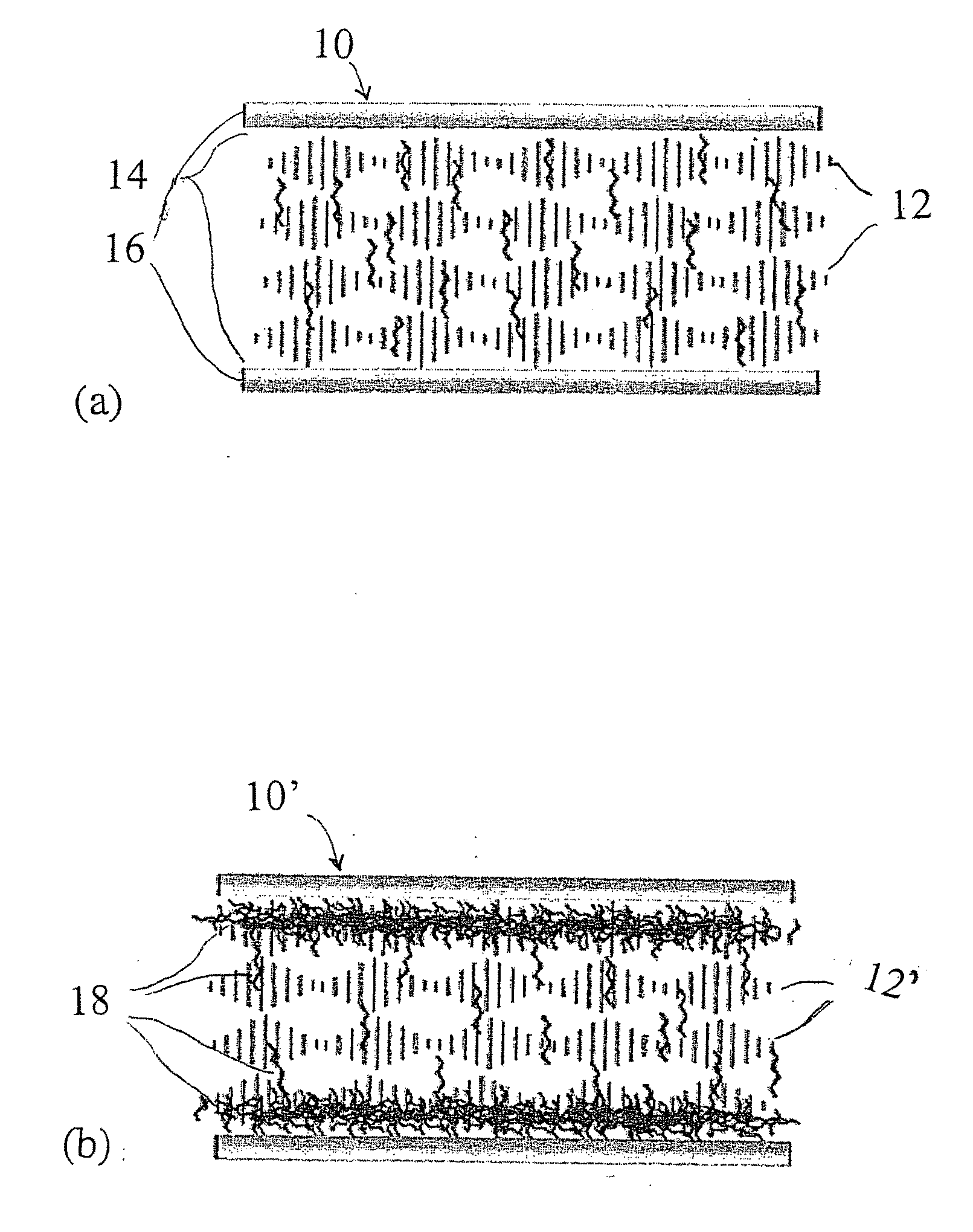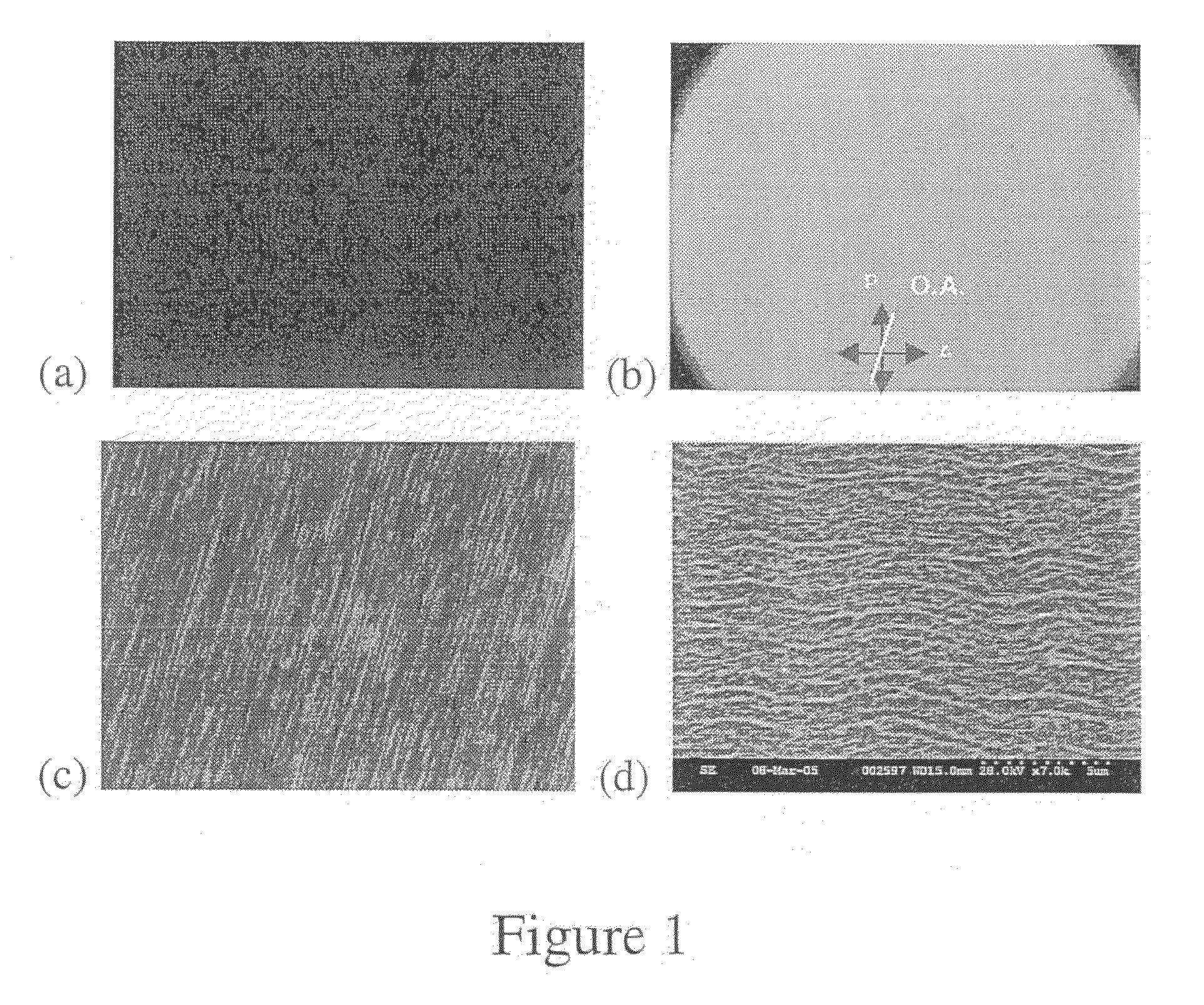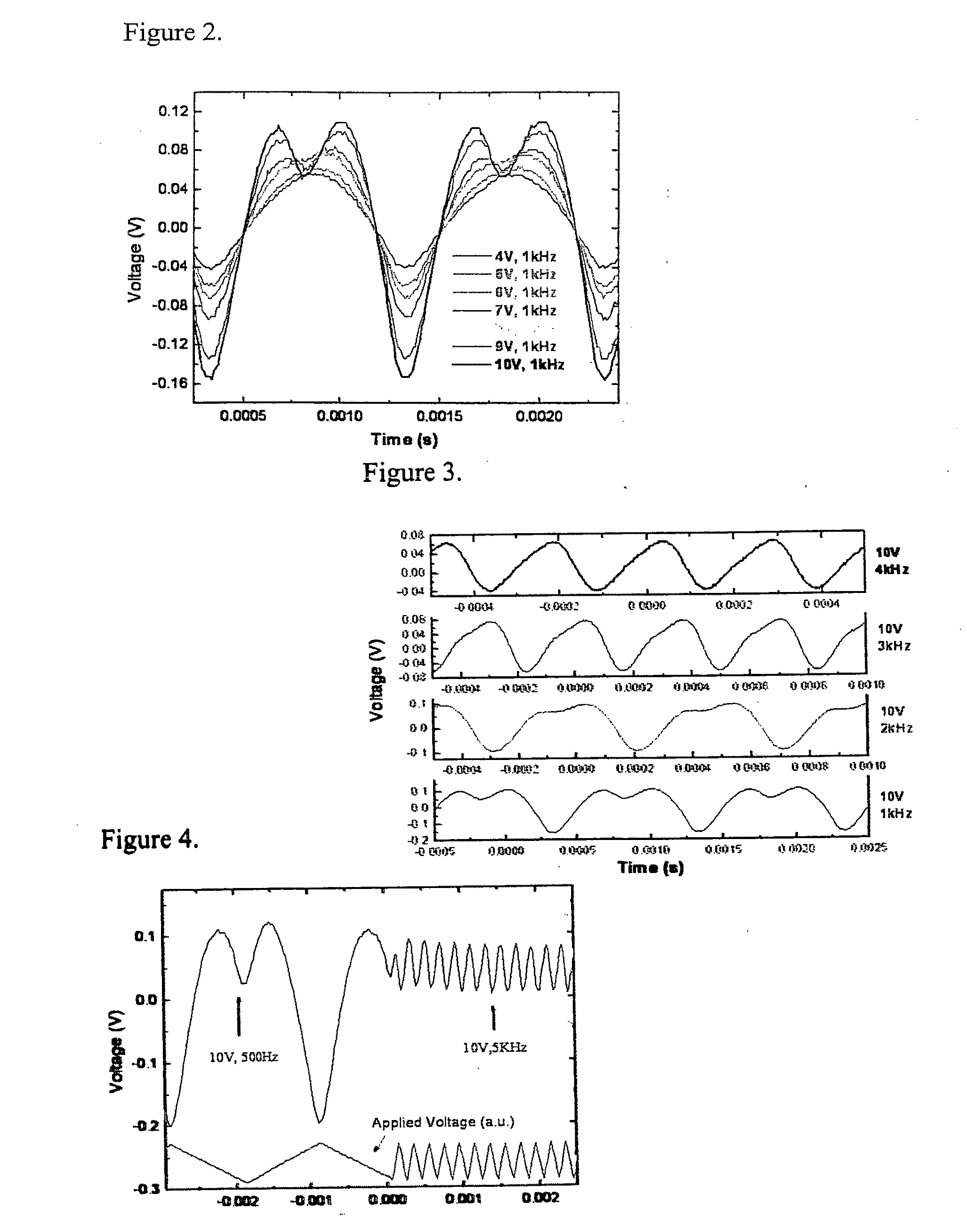Polymer enhanced cholesteric electro-optical devices
a technology of electrooptical devices and cholesteric acid, which is applied in the direction of thin material processing, lamination ancillary operations, instruments, etc., can solve the problems of increasing the difficulty of manufacturing process, increasing power consumption, and deficient motion picture response time, and achieve high contrast in-plane switching
- Summary
- Abstract
- Description
- Claims
- Application Information
AI Technical Summary
Benefits of technology
Problems solved by technology
Method used
Image
Examples
example 1
Preparation and Characterization of a Liquid Crystal Cell
[0025]The mesogenic monomer RM257 was added to ChLC and the mixture was vortex-mixed in a vial, heated to around 50° C. and cooled to room temperature. Commercial electro-optical cells with ITO electrodes (i.e. having an electrode area ˜10 mm2) and alignment layers deposited on the inner surface of the confining substrates and with μm spacers are used for a planar alignment. The mixture is sandwiched between two substrates with patterned electrodes and alignment layers deposited on the electrodes and rubbed and assembled in a fashion to provide homogeneous alignment. Glass spacers were used in order to control the uniformity of cell gap. The cell was heated to a high temperature exceeding the isotropic temperature of the mixture and cooled to room temperature either with 2.7 V / μm @ 1 KHz or without an applied voltage. Once such a texture was obtained, the cell is exposed to UV light at 0.8 mW / cm2 intensity for 5 min at room te...
PUM
| Property | Measurement | Unit |
|---|---|---|
| concentration | aaaaa | aaaaa |
| wave length | aaaaa | aaaaa |
| area | aaaaa | aaaaa |
Abstract
Description
Claims
Application Information
 Login to View More
Login to View More - R&D
- Intellectual Property
- Life Sciences
- Materials
- Tech Scout
- Unparalleled Data Quality
- Higher Quality Content
- 60% Fewer Hallucinations
Browse by: Latest US Patents, China's latest patents, Technical Efficacy Thesaurus, Application Domain, Technology Topic, Popular Technical Reports.
© 2025 PatSnap. All rights reserved.Legal|Privacy policy|Modern Slavery Act Transparency Statement|Sitemap|About US| Contact US: help@patsnap.com



